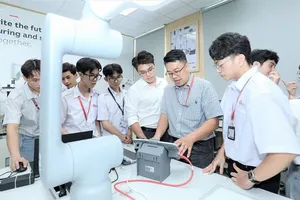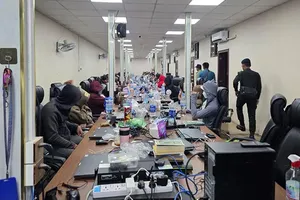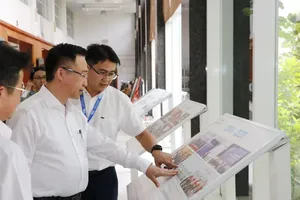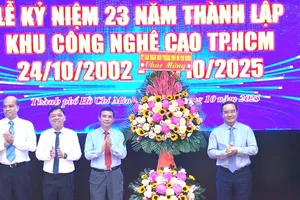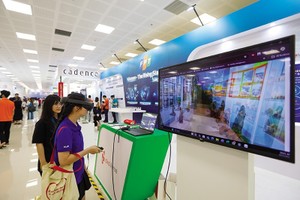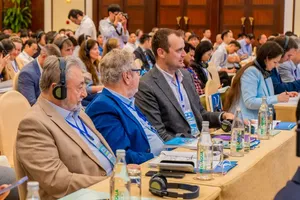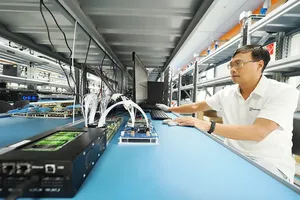
A prime destination for global giants
In late September 2025, U.S.-based Marvell Technology Inc. inaugurated three new offices in Vietnam, including two in Ho Chi Minh City, one of which houses a modern R&D laboratory. The corporation aims to make its Vietnam R&D Center the third largest globally, after the United States and India. “Vietnamese engineers are now participating in some of the most advanced and complex semiconductor projects in the world”, said General Director Le Quang Dam of Marvell Vietnam.
Earlier, in August 2025, German software giant SAP launched its R&D Center in Ho Chi Minh City, its second in Southeast Asia after Singapore, with an announced investment of up to €150 million. The center will collaborate closely with SAP’s global R&D network to leverage shared knowledge and develop innovative technology solutions.
In June 2025, U.S.-based Qualcomm introduced its AI R&D Center in Vietnam- the company’s third largest AI facility worldwide. The establishment of this center underscores Qualcomm’s high regard for Vietnam’s human capital and AI ecosystem. It also opens new avenues for collaboration, technology transfer, and the advancement of domestic research capacity.
The center focuses on developing generative and agent-based AI solutions across multiple domains, including smartphones, personal computers, extended reality (XR), automobiles, and the Internet of Things (IoT).
Among the most notable facilities is Samsung’s R&D Center in Hanoi, with a total investment of approximately US$220 million. Operational since December 2022, the center marks a major shift in Samsung’s strategy positioning Vietnam not only as a global manufacturing base but also as a strategic link in the company’s worldwide R&D network.
Ho Chi Minh City has initiated a plan to train 9,000 semiconductor microchip engineers during the period of 2026-2030, contributing to the national goal of establishing a team of 50,000 high-quality engineers by the year 2030.
The city consistently collaborates with businesses, particularly global technology corporations, in the development of high-quality human resources.
In this journey, R&D centers play a crucial role, serving as a bridge between knowledge, technology, and innovation.
Opportunities to enhance the quality of technology talent
Since September 2024, SAP Labs Vietnam has recruited more than 200 employees and plans to expand its workforce to 500 by 2027. In addition to seeking senior-level professionals, SAP Labs Vietnam is working closely with leading universities in Ho Chi Minh City to nurture technology talent while opening career pathways in advanced fields such as data analytics, artificial intelligence (AI), and software engineering.
“We are aiming for a greater goal: building an ecosystem for talent that connects Vietnam’s most creative and technologically proficient experts,” said Managing Director Manik Saha of SAP Labs Singapore and Vietnam.

Similarly, Qualcomm’s AI R&D Center is committed to generating long-term socio-economic benefits by creating high-value technical jobs, partnering with Vietnamese universities, and strengthening the local talent pool.
The emergence of R&D centers has enabled Vietnamese engineers to mature rapidly, master cutting-edge technologies, and take on complex, mission-critical design tasks.
For example, when Marvell Vietnam (located in Tan Thuan Export Processing Zone, Ho Chi Minh City) was established in 2013, it had only five engineers and staff, focusing mainly on design verification projects. Over time, the team expanded to cover the entire integrated circuit (IC) design process from architecture, digital design, and mixed-signal design to circuit schematics, simulation, test design, physical design, software, and firmware development.
Today, Marvell Vietnam is recognized as the company’s third largest R&D center worldwide, with more than 500 engineers, ranking just behind the United States and India.
SHTP attracts investors with pioneering technology
According to Nguyen Ky Phung, Head of the Management Board of the Saigon Hi-Tech Park (SHTP), during the period from 2025 to 2030, the organization aims to prioritize the development of key technology sectors such as microelectronics, semiconductors, data centers and artificial intelligence (Data Center & AI Factory), robotics, and autonomous devices, as well as biotechnology for human healthcare.
To ensure the advancement of high technology, SHTP is determined to attract projects that are R&D Centers, enhance technology transfer activities, build an ecosystem of innovation and creativity, and support the growth of startup companies. The current challenge is to attract foreign investors with pioneering technology while simultaneously developing domestic technology enterprises.




